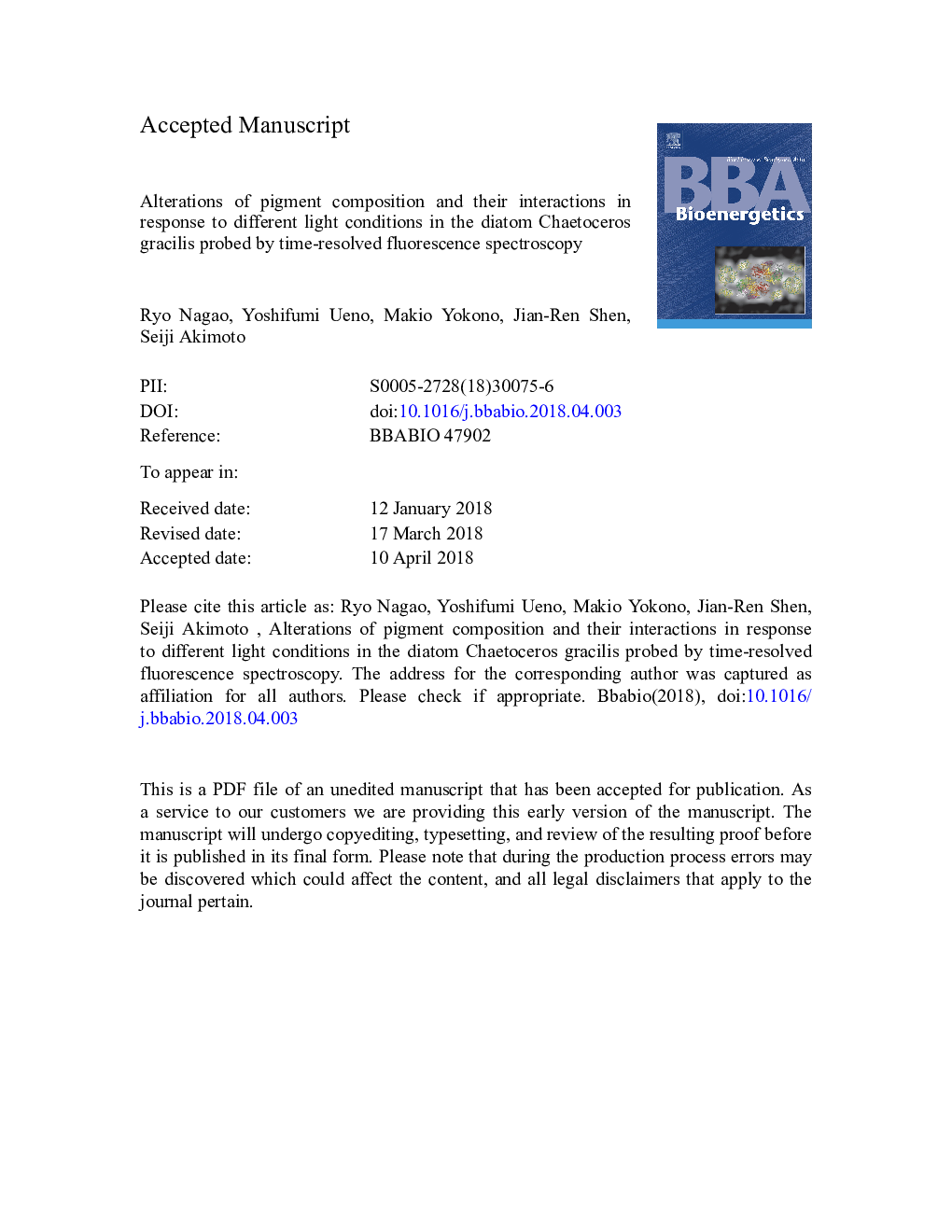| Article ID | Journal | Published Year | Pages | File Type |
|---|---|---|---|---|
| 8298561 | Biochimica et Biophysica Acta (BBA) - Bioenergetics | 2018 | 34 Pages |
Abstract
Maintenance of energy balance under changeable light conditions is an essential function of photosynthetic organisms to achieve efficient photochemical reactions. Among the photosynthetic organisms, diatoms possess light-harvesting fucoxanthin chlorophyll (Chl) a/c-binding protein (FCP) as peripheral antennas. However, how diatoms regulate excitation-energy distribution between FCP and the two photosystem cores during light adaptation is poorly understood. In this study, we examined spectroscopic properties of a marine diatom Chaetoceros gracilis adapted in the dark and at photosynthetic photon flux density at 30 and 300â¯Î¼molâ¯photonsâ¯mâ2â¯sâ1. Absorption spectra at 77â¯K showed significant changes in the Soret region, and 77-K steady-state fluorescence spectra showed significant differences in the spectral shape and relative fluorescence intensity originating from both PSII and PSI, among the cells grown under different light conditions. These results suggest alterations of pigment composition and their interactions under the different light conditions. These alterations affected the excitation-energy dynamics monitored by picosecond time-resolved fluorescence analyses at 77â¯K significantly. The contributions of Chls having lower energy levels than the reaction center Chls in the two photosystems to the energy dynamics were clearly identified in the three cells but with presumably different roles. These findings provide insights into the regulatory mechanism of excitation-energy balance in diatoms under various light conditions.
Keywords
Related Topics
Life Sciences
Agricultural and Biological Sciences
Plant Science
Authors
Ryo Nagao, Yoshifumi Ueno, Makio Yokono, Jian-Ren Shen, Seiji Akimoto,
